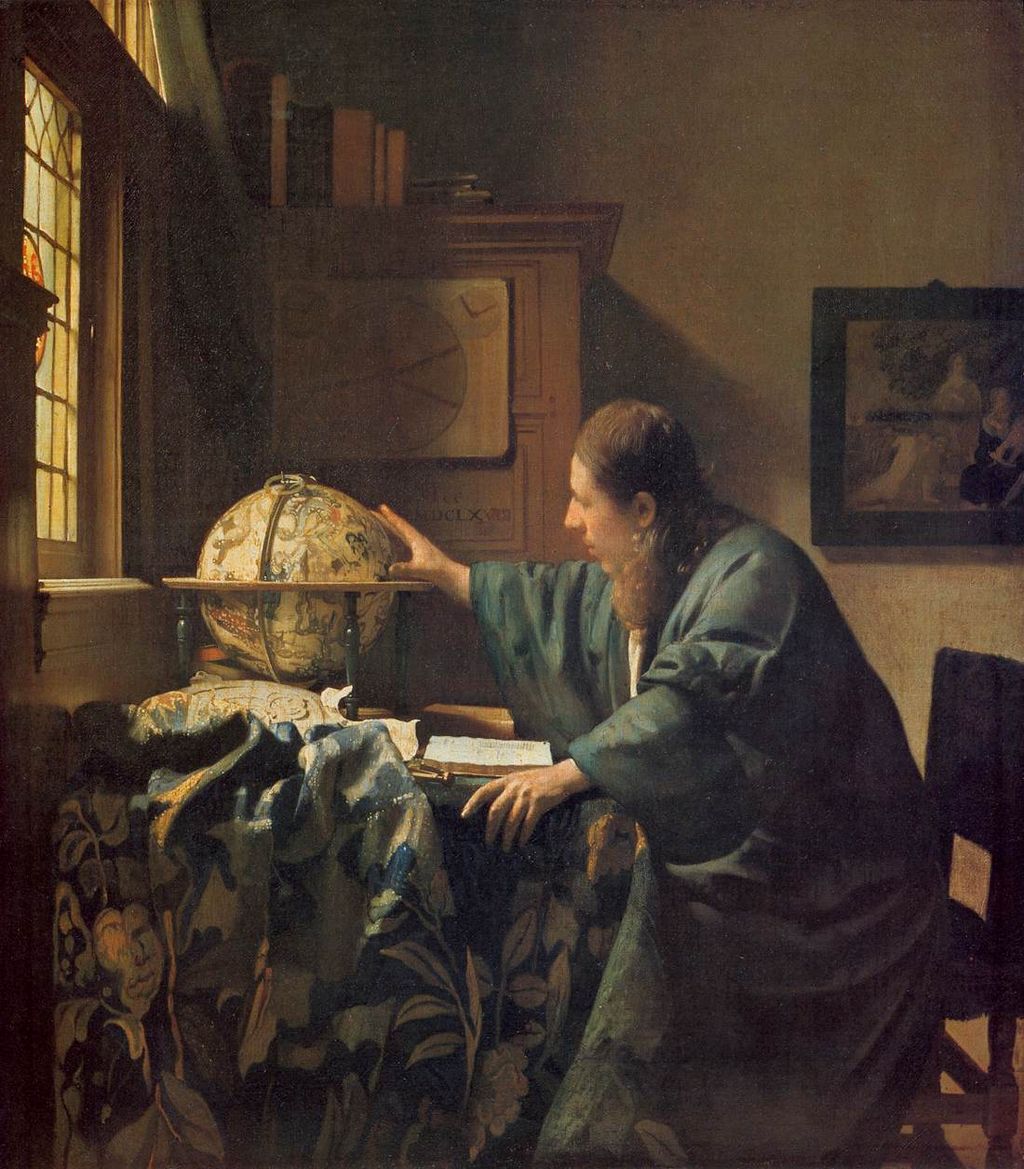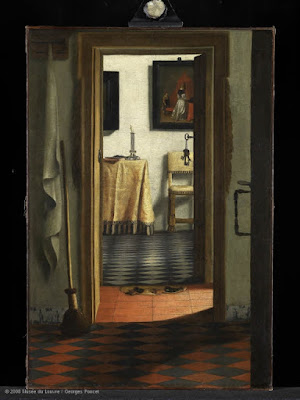 |
| Johannes Vermeer, Woman Holding a Balance, 1664 |
Unfortunately, the defining aspect of this exhibition is the
crowds. I have never seen hoards of this magnitude at the Louvre before. So the
first thing I have to say about Vermeer, et les Maîtres de la Peinture de Genre is that if it’s Vermeer’s
paintings you are interested in, I would suggest a tour of Europe’s major
museums bookended by the National Gallery in Washington and the Metropolitan
Museum. Because while the dozen or so Vermeer’s on display here are exquisite,
getting close to the small, intimate images is virtually impossible.
 |
| Johannes Vermeer, The Astronomer, 1668 |
However, in usual Louvre style, the exhibition is remarkable and there are other reasons to wait in line. Not only are
the Vermeer paintings beautiful, but the exhibition opens up to the world of Delft in
the 17th century, and the wealth of genre painting in Vermeer’s
midst. Vermeer favorites such as Woman
Holding a Balance (1664), The
Milkmaid (1659) , The Astronomer (1668) and others are
shown in their contemporary environment of works by Gerard ter Borch, Jan
Steen, Frans van Mieris, Gerard Dou, Nicolaes Maes and others. Usually in
exhibitions of this kind, the works by contemporaries pale in comparison to the
master whose name is all over the publicity material. Here that is definitely
not the case. The contemporaries seemed to me to be as significant as Vermeer,
and we are treated to a glimpse of the rich world of 17th century
Delft painting. Needless to say, there was no crowding around the lovely works
of Vermeer’s contemporaries.
Perhaps most surprising is what we learn about the artistic
world in which Vermeer was working. He was certainly no genius working in a vacuum; everyone was painting lacemakers, women with love letters, astronomers and
geographers. Moreover, the exact same iconography is used by all of the
contemporary painters. With regards to the content and iconography, there is nothing
original in Vermeer’s work. Maps and globes are everywhere to signal the dawn
of the age of travel and modernity, it was common to show women alone in
pursuit of their activities, as it was to see music lessons, marriage
propositions and curtains pulled back on intimate scenarios.
 |
| Samuel van Hoogstraten, View of an Interior, or The Slippers, 1658 |
 |
| Johannes Vermeer, The Milkmaid, 1667-68 |
This question of what sets Vermeer apart pursued me around
the exhibition. There is his use of color, particularly the signature
blue and yellow, which are not so vibrant on other painters’ canvases. Then
again, the silks of, for example, Gerard ter Borch’s, Gallant Conversation (1654)
or Eglon van der Neer’s Lute Player at a
Virginal (1669) are sumptuous and
shine in different ways. But what Vermeer does that none of his contemporaries
come near is in the nuances of the light. In juxtaposition, we see light
falling through windows and gently embracing the woman as she prepares to weigh her
jewelry, or holds her pearl necklace to the light as she reflects on her thoughts in Young Woman with a Pearl Necklace
(1662-65). In other paintings of the same genre, the light tends to be more
even, and typically harsher.
 |
| Gerard ter Borch, Gallant Conversation, 1654 |
A lot of effort is made by critics to debate what
the women in Vermeer’s paintings are doing, who they are, what class they
belong to, and what the narrative that surrounds them entails. On floors strewn
with slippers – belonging to both genders – men offering women oysters, or a
music lesson, birds in cages and pearl earrings, critics discover adultery,
grief, pregnancy out of wedlock, and unrequited love. But in the end, it doesn’t
really matter what the paintings represent. What matters is that we are not
sure, that there is always a haze of uncertainty cloaking the figures and the
objects with which they share the frame. All we can be sure of is in the movement
of the light, the mood, the meaning and the emotions it expresses, Vermeer's depictions become sublime.

No comments:
Post a Comment